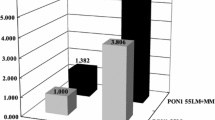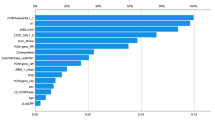Abstract
The high-density-lipoprotein-associated enzyme paraoxonase, which has a role in the detoxification of organophosphorus compounds, is known to be polymorphic in humans. The Arg192 isoform of paraoxonase hydrolyzes paraoxon more rapidly than the Gln192 isoform. However, with respect to the hydrolysis of toxic nerve agents, such as diazoxon, soman, and sarin, the Arg192 isoform displays a lower activity than the other isoform. To evaluate the possibility that the genetic polymorphism was involved in the aggravated extent of human injury in the sarin gas poisoning incident in the Tokyo subway in March 1995, we investigated the prevalance of this polymorphism in the Japanese population. We found that the Arg192 allele is more common in the Japanese (allele frequency: 0.66) than in people of other races (ranging 0.24–0.31). In the Japanese, 135 out of the 326 subjects (41.4%) investigated were homozygous for the Arg192 allele, which shows a very low hydrolysis activity for sarin. Thus, there seems to be a racial difference in vulnerability to toxic nerve agents, such as sarin. The dominance of the Arg192 allele in the Japanese population probably worsened the tragedy of March 1995 in the Tokyo subway.
Similar content being viewed by others
Author information
Authors and Affiliations
Additional information
Received: 5 April 1997 / Accepted: 10 June 1997
Rights and permissions
About this article
Cite this article
Yamasaki, Y., Sakamoto, K., Watada, H. et al. The Arg192 isoform of paraoxonase with low sarin-hydrolyzing activity is dominant in the Japanese. Hum Genet 101, 67–68 (1997). https://doi.org/10.1007/s004390050588
Issue Date:
DOI: https://doi.org/10.1007/s004390050588




